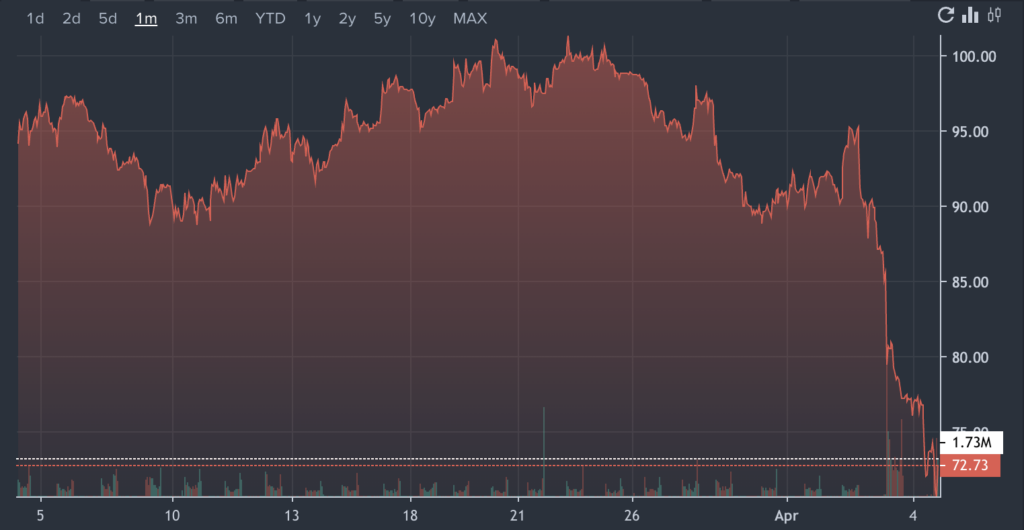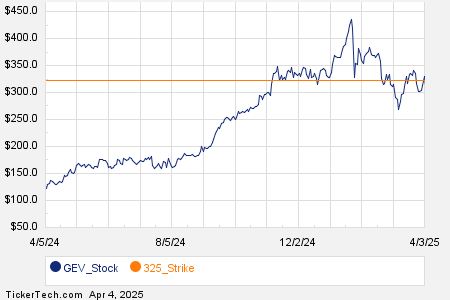Coffee Prices Decline Sharply Amid Market Pressures
May arabica coffee (KCK25) closed down -19.55 (-5.07%) on Friday, while May ICE robusta coffee (RMK25) saw a decrease of -259 (-4.82%).
Coffee Market Faces Significant Declines
Coffee prices took a nosedive on Friday, marking a two-month low for arabica and a two-and-a-half-month low for robusta. The risk-off sentiment dominating asset markets pressured most commodity prices, including coffee. Additionally, there are concerns regarding potential demand decreases as rising tariffs push coffee prices higher for consumers.
Export Dynamics and Weather Conditions
Losses in coffee prices intensified as the Brazilian real (^USDBRL) dropped to a three-week low against the dollar, prompting increased selling from Brazilian coffee exporters. Over the past month, coffee prices have been struggling due to easing concerns over dryness in Brazil. On March 29, Somar Meteorologia reported that the Minas Gerais region, Brazil’s prime arabica growing area, received 31.1 mm of rain, which is 114% of the historical average.
Despite some easing weather concerns, supply fears continue to support coffee prices. Data from Cecafe released on March 13 indicated that Brazil’s February green coffee exports fell -12% year-over-year to 3 million bags. Furthermore, on January 28, Conab, the Brazilian government’s crop forecasting agency, projected a 4.4% year-over-year drop in Brazil’s 2025/26 coffee crop, forecasting it to reach a three-year low of 51.81 million bags. They also revised down their 2024 coffee crop estimate by -1.1%, now predicting 54.2 million bags instead of the earlier estimate of 54.8 million bags.
Inventory Levels and Agricultural Challenges
Tightening coffee inventories have provided some price support, as ICE-monitored arabica coffee stocks fell to a one-and-a-half-month low of 770,476 bags on Monday, while robusta coffee inventories dropped to a three-week low of 4,308 lots on Friday. Support also came from Cooxupe, Brazil’s largest arabica coffee cooperative, which indicated that high temperatures and below-normal rainfall last month would negatively impact coffee yields this year.
On the downside, Marex Solutions predicted on March 7 that the global coffee surplus for the 2025/26 season could increase to 1.2 million bags, compared to a surplus of +200,000 bags in 2024/25. Increased global production forecasts also add bearish pressure on robusta prices, with projections suggesting a rise of +7.9% in Vietnam’s 2025/26 robusta production to 28.8 million bags and a +13.6% increase in Brazil’s output to 25 million bags.
Long-term Outlook and Climate Concerns
The aftermath of last year’s El Nino weather patterns could significantly harm coffee crops in South and Central America. Rainfall in Brazil has remained consistently below average since April, impacting coffee trees during their critical flowering period and diminishing expectations for Brazil’s arabica crop in 2025/26. According to the natural disaster monitoring center Cemaden, Brazil is experiencing the driest conditions since 1981. Meanwhile, Colombia, the second-largest producer of arabica, is gradually recovering from the drought linked to El Nino.
Robusta coffee prices are bolstered by a decline in robusta production. Due to drought conditions, Vietnam’s coffee output for the 2023/24 crop year shrank by -20% to 1.472 MMT, the smallest yield in four years. The country’s General Statistics Office also reported a -17.1% year-over-year decrease in coffee exports for 2024 to 1.35 MMT. Additionally, the Vietnam Coffee and Cocoa Association reduced its 2024/25 production estimate from 28 million bags to 26.5 million bags, while customs data revealed a -15.3% year-over-year decline in Vietnam’s coffee exports from January to March, totaling 495,780 MT.
Global Export Trends and Future Projections
Recent reports of larger global coffee exports have further weighed on prices. Conab noted that Brazil’s 2024 coffee exports soared by +28.8% year-over-year to a record 50.5 million bags. However, the International Coffee Organization (ICO) indicated that global coffee exports fell -12.4% year-over-year in December to 10.73 million bags, with an overall decline of -0.8% in global exports from October to December, totaling 32.25 million bags.
The USDA’s biannual report, released on December 18, provided a mixed outlook for coffee prices. The Foreign Agriculture Service (FAS) predicted a global coffee production increase of +4.0% year-over-year to 174.855 million bags, with arabica production anticipated to rise by +1.5% to 97.845 million bags and robusta production by +7.5% to 77.01 million bags. The FAS also projected a -6.6% drop in 2024/25 ending stocks, potentially reaching a 25-year low of 20.867 million bags.
For the 2025/26 marketing year, Volcafe reported on December 17 a reduction in Brazil’s arabica production estimate to 34.4 million bags, down about 11 million bags from an earlier estimate, emphasizing the severity of Brazil’s extended drought. The global arabica coffee deficit for 2025/26 is projected to reach -8.5 million bags, worsening from a deficit of -5.5 million bags for the 2024/25 season and marking the fifth consecutive year of deficits.
On the date of publication, Rich Asplund did not have (either directly or indirectly) positions in any of the securities mentioned in this article. All information and data in this article is solely for informational purposes. For more information please view the Barchart Disclosure Policy
here.
More news from Barchart
The views and opinions expressed herein are the views and opinions of the author and do not necessarily reflect those of Nasdaq, Inc.


